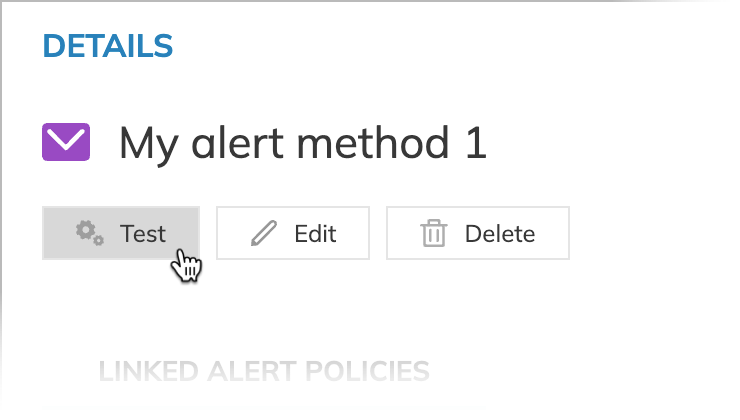MS Teams alert method
The MS Teams alert method sends alerts through MS Teams to notify Nobl9 users whenever an incident is triggered.
Authentication
Microsoft is retiring its Office 365 Connectors service, impacting webhook integrations with MS Teams. To ensure continued functionality, update the URLs for all webhook-based connectors.
The entire Office 365 Connectors service in MS Teams will be retired at the end of 2025. It is recommended migrating your webhooks to the Workflows app within MS Teams.
MS Teams Webhook URLs
To set up the MS Teams integration, you’ll need to provide an MS Teams Webhook URL. This allows you to send an automated notification to a channel of your choice. For details, see MS Teams documentation.
Adding the MS Teams alert method
Alternatively, utilize the SLOs-as-code approach by:
- Applying an alert method YAML configuration with the
sloctl applycommand. - Configuring the MS Teams alert method definition programmatically using the Nobl9 Terraform provider.
Nobl9 Web
To set up the alert method in the Nobl9 UI, follow these steps:
- Navigate to Integrations > Alert methods.
- Click
.
- Select MSTeams.
- Enter the URL (mandatory).
This is your MS Teams Workflows URL. To obtain the required URL, configure an incoming webhook using the Microsoft Teams Workflows app.
- Select a Project (mandatory).
Project is a way to organize your Nobl9 resources and manage access to them.
When Project is skipped, Nobl9 uses thedefaultproject. - Enter a Display Name (optional).
Spaces are allowed. - Enter a Name (mandatory).
The name is mandatory and can only contain lowercase, alphanumeric characters, and dashes (for example,my-alert-method-1). Nobl9 duplicates the display name here, transforming it into the supported format, but you can edit the result. - Enter a Description (optional).
Provide extra details about it, its purpose, responsible persons, etc.
Up to 1050 characters.
- Click Add alert method
YAML configuration for MS Teams alerts
- YAML
- Example
apiVersion: n9/v1alpha
kind: AlertMethod
metadata:
name: string # Mandatory
displayName: string # Mandatory
project: string # Mandatory
# Optional
# The key value: only alphanumeric characters, `-`, `_`, or `.` are allowed.
# The key value must start and end with an alphanumeric character.
# An optional DNS subdomain prefix followed by `/` is allowed.
annotations:
key: value
spec:
description: string # Mandatory
msteams:
url: string # Mandatory, requires https://, secret field
apiVersion: n9/v1alpha
kind: AlertMethod
metadata:
name: teams
displayName: Teams Alert Method
project: default
annotations:
area: latency
env: prod
region: us
team: sales
spec:
description: Example Teams Alert Method
msteams:
url: https://meshmark.webhook.office.com/webhookb2/123@321/IncomingWebhook/123/321
| Field | Type | Description |
|---|---|---|
url | string | The MS Teams Webhook URL. To obtain the required URL, configure an incoming webhook using the Microsoft Teams Workflows app. |
Testing the MS Teams alert method in the UI
- Navigate to Integrations > Alert methods.
- Click the required alert method.
Its Details page opens. - Click Test under the alert method name:

- When the configuration is correct, Nobl9 displays Test completed successfully! under the button.
- Otherwise, the Test failed message appears. It contains the details of incorrect settings.

